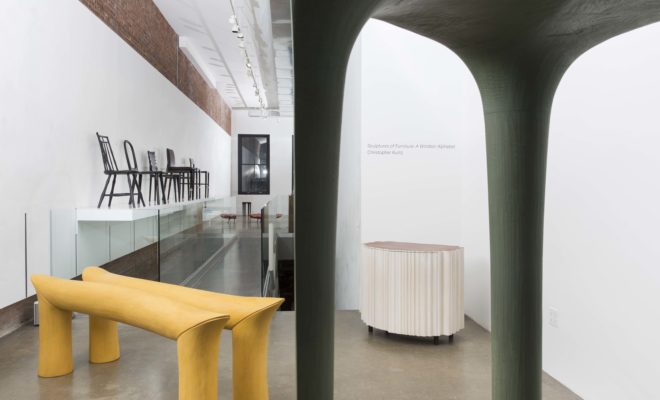 Installation view of Sculptures of Furniture: A Windsor Alphabet. PHOTO: CLEMENS KOIS FOR PATRICK PARRISH GALLERY.
Installation view of Sculptures of Furniture: A Windsor Alphabet. PHOTO: CLEMENS KOIS FOR PATRICK PARRISH GALLERY.
Exhibition
The Windsor Recast: Christopher Kurtz at Patrick Parrish
An eighteenth-century chair might seem like an unlikely starting point for an exhibition at the more contemporary Patrick Parrish Gallery, but don’t be fooled. In Sculptures of Furniture: A Windsor Alphabet, Hudson Valley-based designer Christopher Kurtz has taken the historic birdcage Windsor chair and stretched it, disassembled it, repeated it, and pushed its form to the limits, resulting in a playful collection of furniture for twenty-first-century eyes.
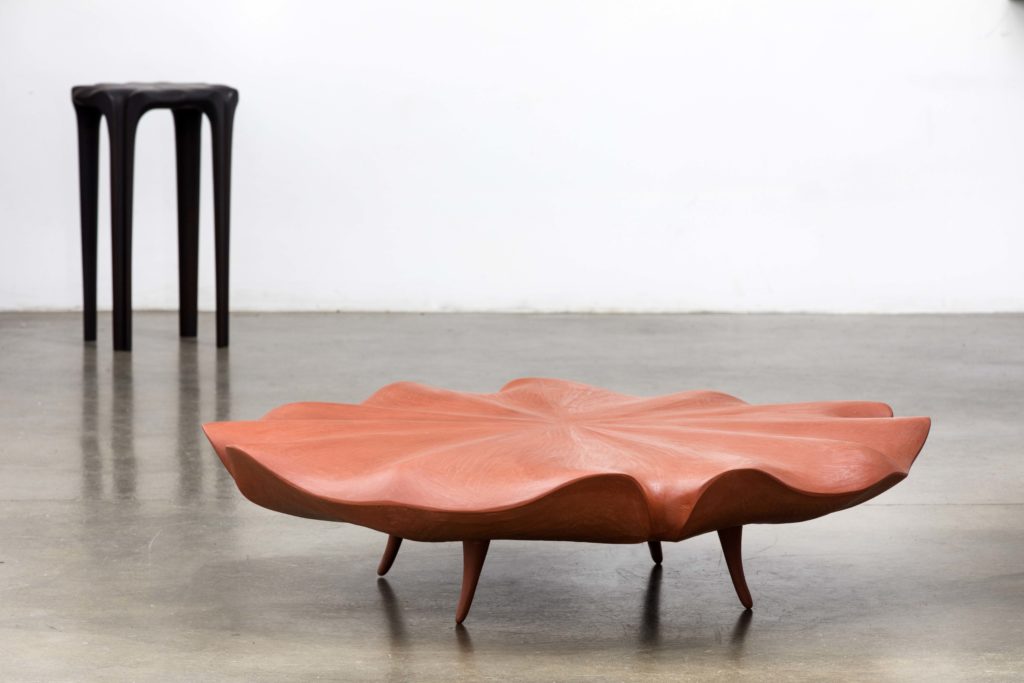
Kurt’s Pavilion stool and Saddle seat. CLEMENS KOIS PHOTO FOR PATRICK PARRISH GALLERY.
Feeling a bit like Alice in Wonderland, you’re invited to explore different elements of the Windsor chair through varying scales and distortions. In doing this, Kurtz explores the utility of the chair’s forms and how elements of furniture can change their function with size. An enlarged top rail becomes a bench, a towering stool turns into a pavilion. The ability to look up, around, and under the pieces gives us the chance to notice details that often go overlooked in furniture design. This is the case with Duck Bill Miter (Double Crest Rails), where oversized joinery reveals the engineering of attachment. The visual vocabulary of the Windsor chair is also explored through repetition. The distinctive form of the Windsor’s shield seat is prominent throughout, from the lotus-like Saddle seat to Kurtz’s Writing Desk, which transforms elements of the seat into a three-legged table. Tactility is also an important element of his pieces. On his Daybed, the wood is sanded to a velvety softness, emphasized by the application of cornflower blue milk paint. A few smaller chairs on display show the range of Kurtz’s abilities. His Quarter Round counter stools, for instance, take on a more conventional form and serve as an interesting juxtaposition to the larger, experimental pieces.
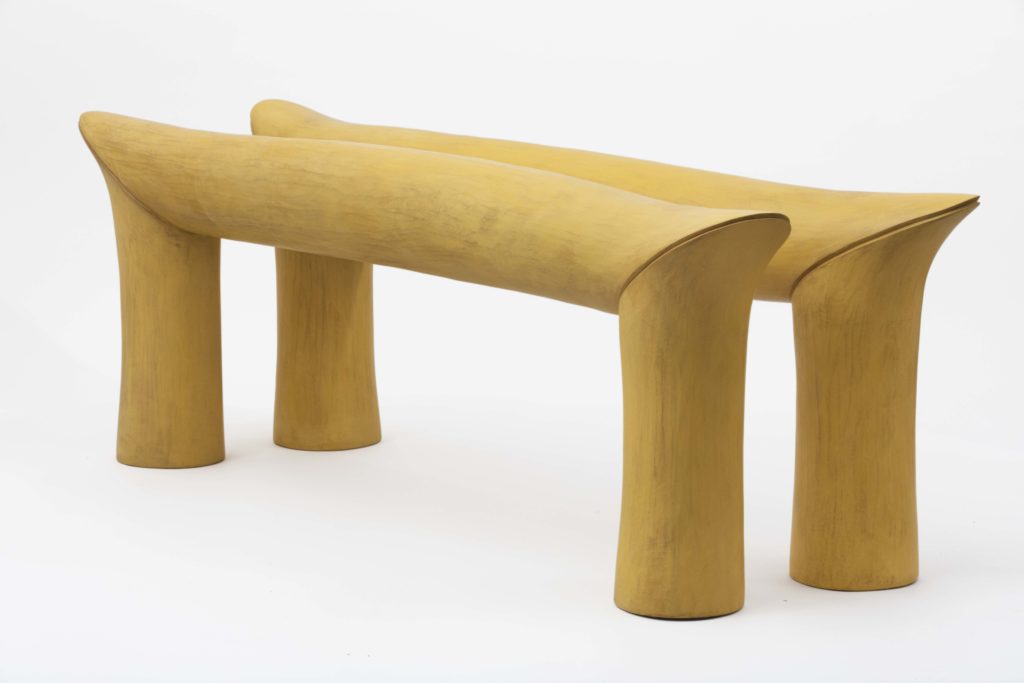
Chair rails inspired this piece, Duck Bill Meiter (Double Crest Rails). CLEMENS KOIS PHOTO FOR PATRICK PARRISH GALLERY.
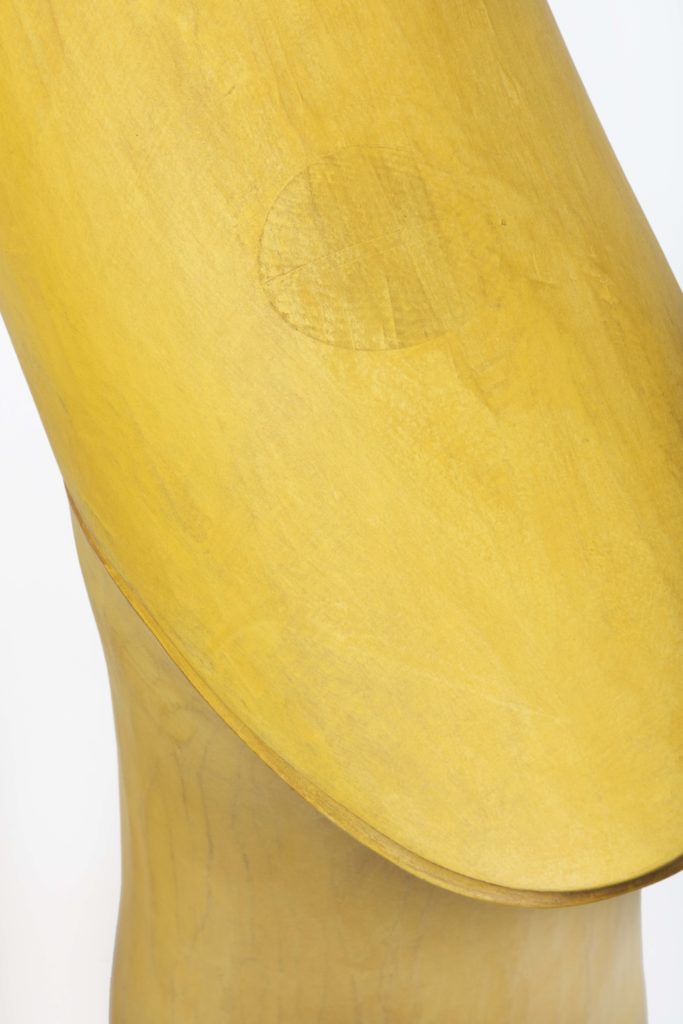
Detail of the joinery on Duck Bill Miter (Double Crest Rails). CLEMENS KOIS PHOTO FOR PATRICK PARRISH GALLERY.
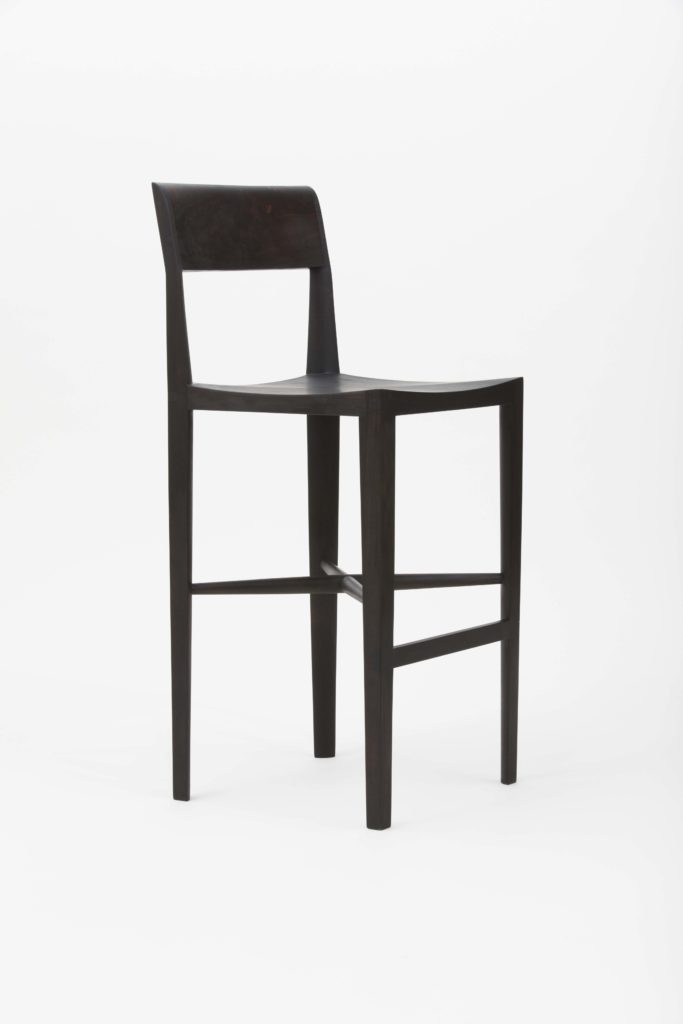
Quarter Round counter stool (With Backrest), 2018. CLEMENS KOIS PHOTO FOR PATRICK PARRISH GALLERY.
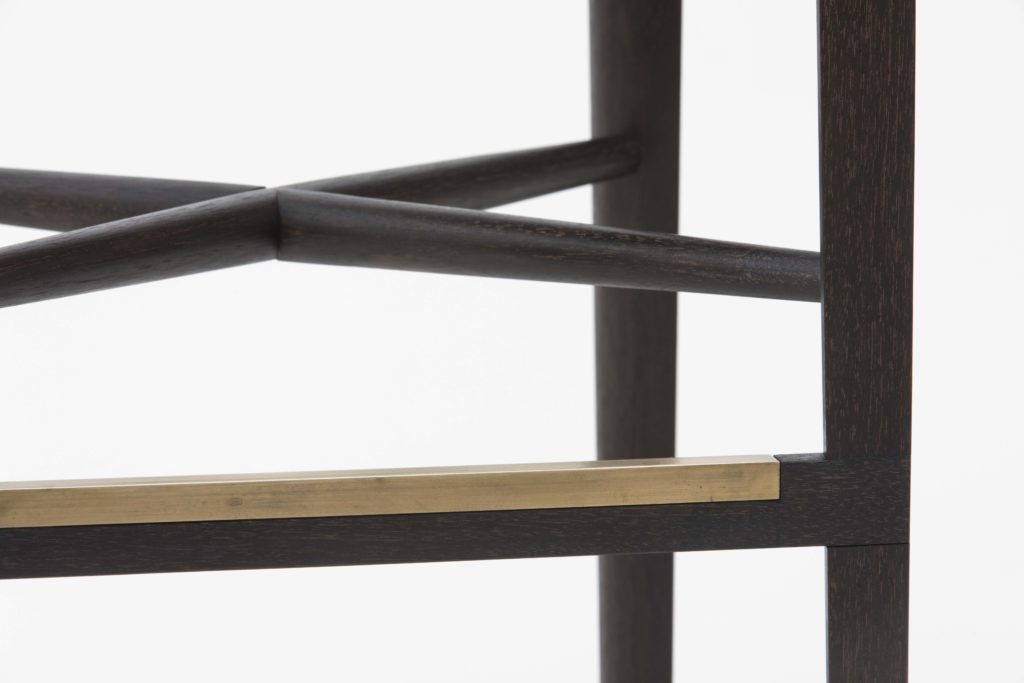
Detail of brass on Quarter Round counter stool (Without Backrest), 2018. CLEMENS KOIS PHOTO FOR PATRICK PARRISH GALLERY.
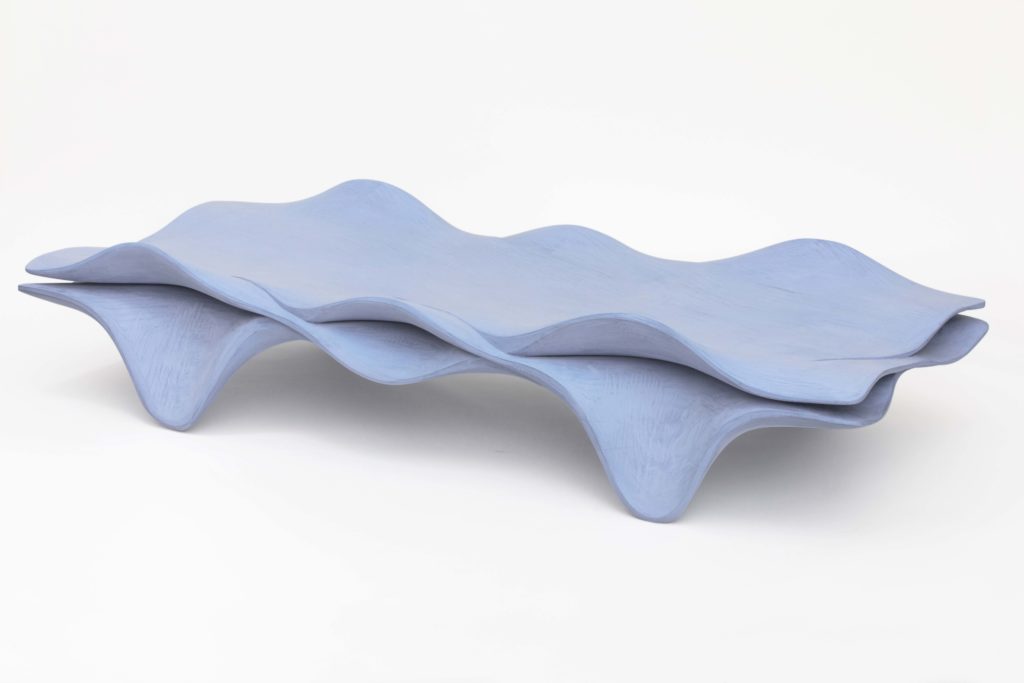
Kurtz’s Daybed, 2018. CLEMENS KOIS PHOTO FOR PATRICK PARRISH GALLERY.
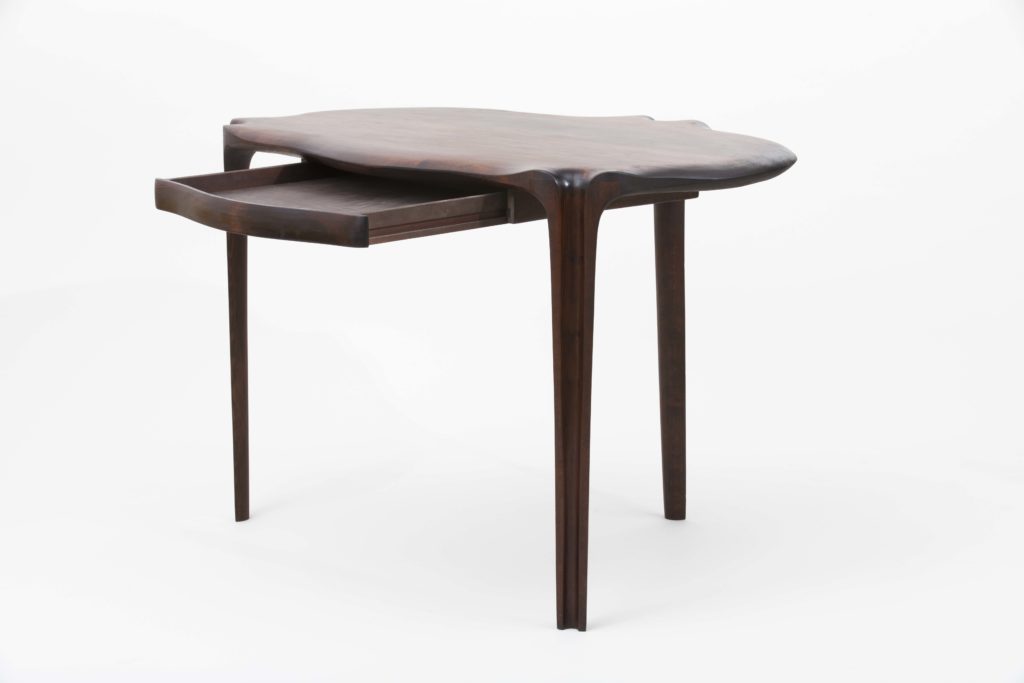
Kurtz’s redwood Writing desk. CLEMENS KOIS PHOTO FOR PATRICK PARRISH GALLERY.
The most dramatic piece is a six-foot-tall version of Kurtz’s Pavilion stool. Looking underneath it, one notices the care with which sage green milk paint has been applied, and finished just as beautifully on the top, adds gallery owner Patrick Parrish, although it’s too high to see. This obsession with quality is a mark of Kurtz’s work. From carved wood cushions (to show upholsterers exactly how a particular chair was to be outfitted) to the unique choice of American Madrone burl wood for the top of his Pearl Cabinet, Kurtz’s hand, eye, and mind run over each design like a fine piece of sandpaper, working out every last detail. A true craftsman, he creates each element of his furniture by hand, nothing is industrially milled.
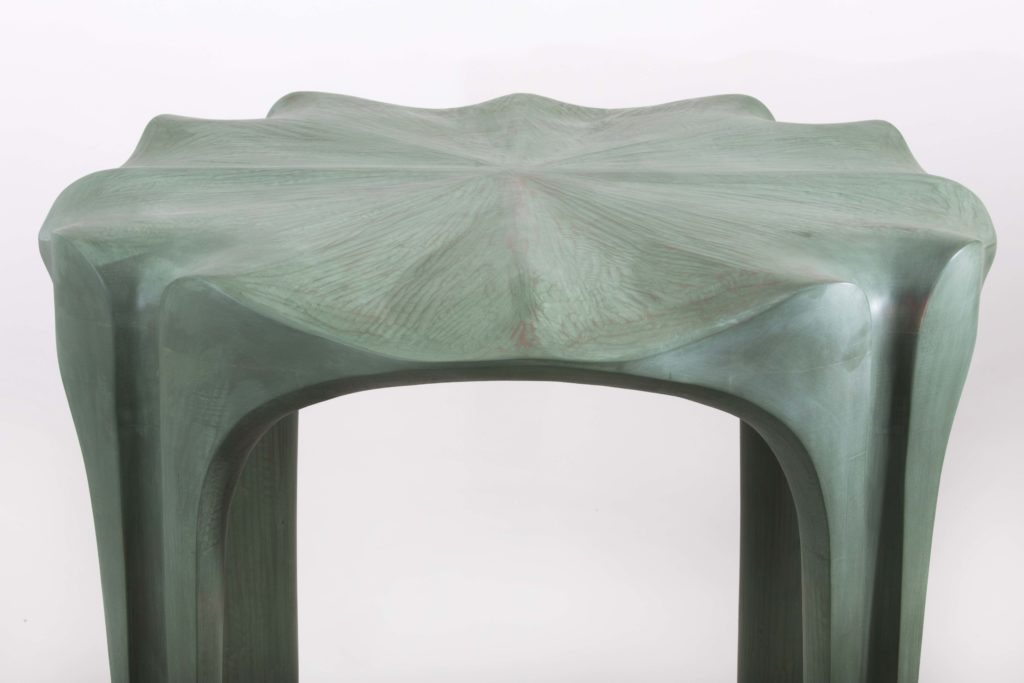
The top of Kurtz’s six-foot Pavilion stool. CLEMENS KOIS PHOTO FOR PATRICK PARRISH GALLERY.
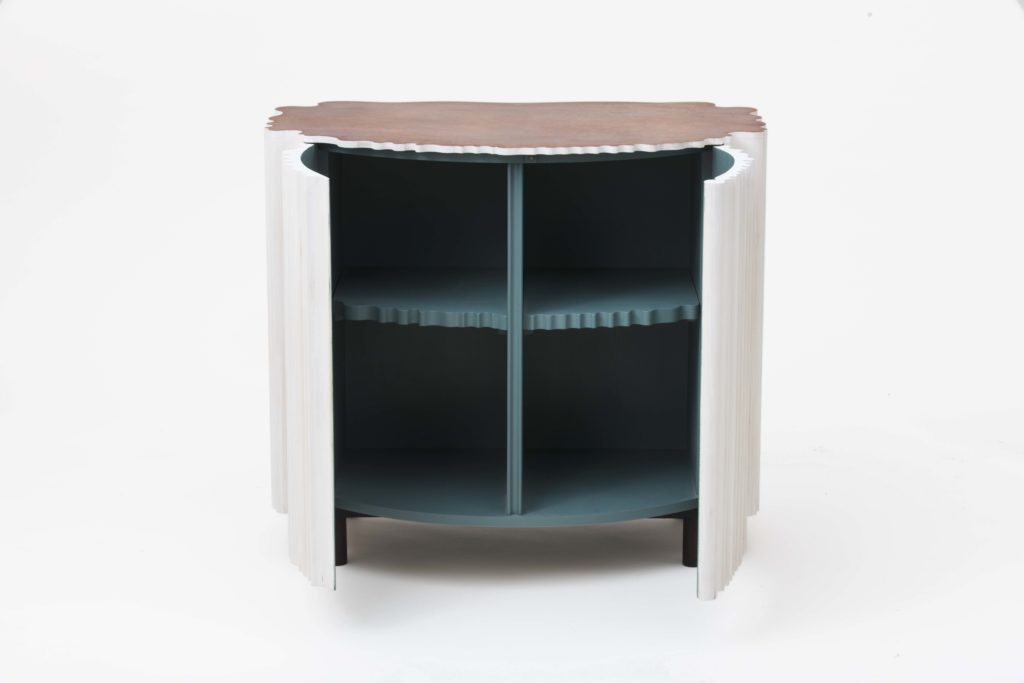
Kurtz’s Pearl cabinet, 2018. CLEMENS KOIS PHOTO FOR PATRICK PARRISH GALLERY.
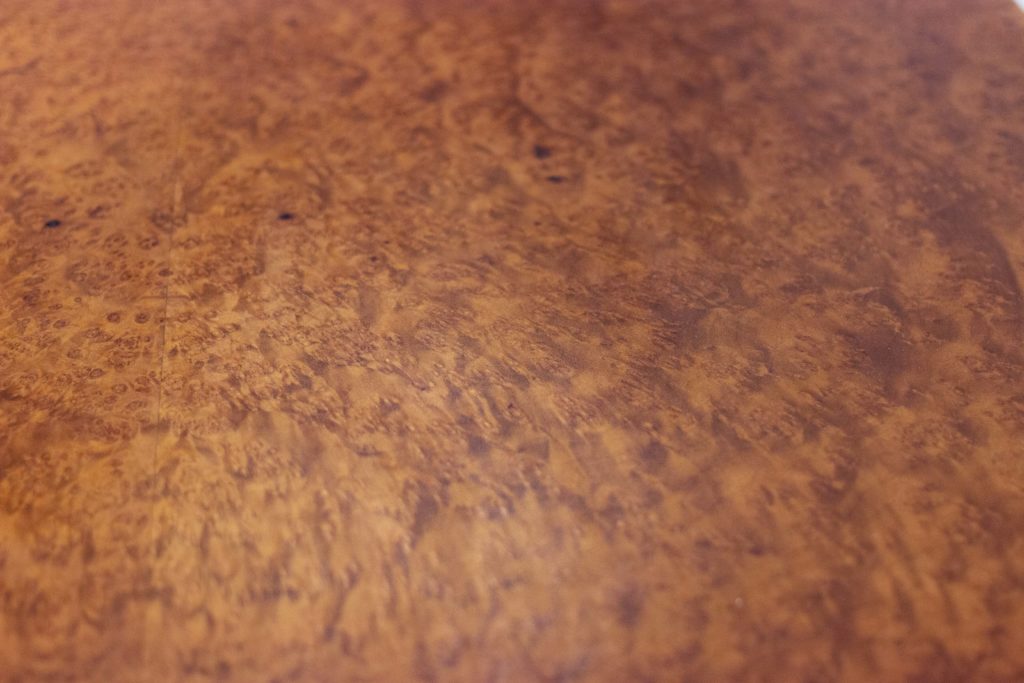
Detail of the Madrone burl wood on the top of Kurtz’s Pearl cabinet. ANNA TALLEY PHOTO.
The designer’s holistic understanding of wood as a material and furniture making as a practice is clearly evident in his highly finished works. His playful exploration of the Windsor chair through distinctly modern forms make this exhibition a study of Kurtz’s larger conceptual underpinnings—a merging of traditional practices with contemporary design.
Sculptures of Furniture: A Windsor Alphabet by Christopher Kurtz is on view at Patrick Parrish Gallery (50 Lispenard Street, New York) through October 13.










